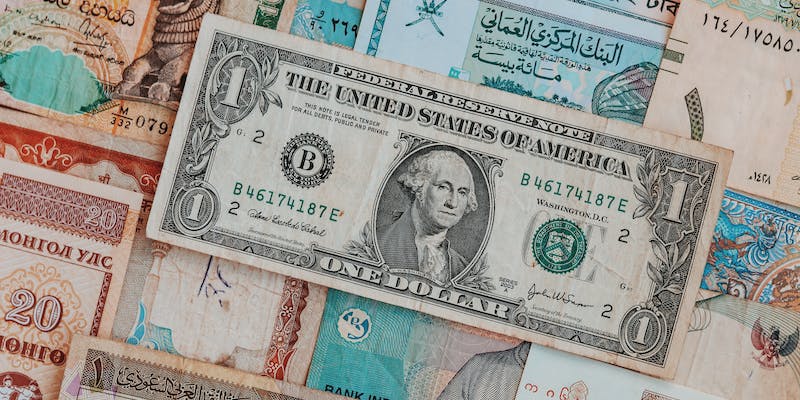When it comes to business, one of the biggest assets a company can have is its intellectual property. It's an intangible asset that includes copyrightable works of authorship, patents, and trademarks—all legal instruments which give creators exclusive rights over their creations.
This type of asset has become increasingly important in our digital age, where most companies aren't creating physical products but instead operate entirely online with their services or software. So the question remains: if intellectual property isn't tangible collateral, is it considered capital?
In this blog post, we will explore what defines types of intellectual properties as capital assets and how they are accounted for.
Intellectual Property in Terms of a Capital Asset
Intellectual property (IP) is an asset that holds intrinsic value. It can be defined as an intangible asset created from the mind or intellect and protected by law, including copyrights, trademarks, patents, and trade secrets.
Regarding capital assets, IP can generally be classified into tangible and intangible. Tangible IP refers to physical items such as manufacturing designs, machines, and tools. Intangible IP consists of copyrights, patents, and trademarks registered with a government authority.
To classify IP as a capital asset, it must meet certain criteria:
- The business should own or control the asset for over a year.
- The asset must have more than one year of useful life.
- The asset must generate or support income for the business.
If an IP satisfies these criteria, it will be classified as a capital asset.
When considering the potential value of intellectual property as a capital asset, businesses should consider its capacity to create or maintain income streams over time.
For example, if a company owns and holds the copyright to a particular work, such as a book or video game, it can use it to earn income through licensing or royalties. They can also use it to protect their brand identity and create an exclusive market position.
In some cases, IP assets may be so valuable that they become the business's primary asset. This "core asset" is the company's most important asset. For instance, many tech companies rely heavily on their patented technologies, usually their core asset.
Intellectual property has become an increasingly important component of capital assets in the modern economy. As such, businesses should consider its value when making investment decisions and business strategies.
With the right legal protection, IP can provide long-term value and help businesses to generate profits over time. Determining and leveraging IP as a capital asset is essential for any business's success.
Understanding Intellectual Property

Intellectual property (IP) is a capital asset that includes intangible creations such as inventions, designs, and literary and artistic works. It can also refer to proprietary knowledge or technology—such as trade secrets—used in producing goods or services.
IP is unique in that it has both economic value and legal protection. Companies often develop IP to give them a competitive edge, which can increase value and provide a greater return on investment.
IP can be divided into two categories: industrial property and copyright-related rights. The industrial property comprises trademarks, patents, geographical indications, designs, and trade secrets.
Copyright-related rights include literary works such as novels or plays; musical compositions, artistic works such as photographs or sculptures; and software. These rights must be registered to receive legal protection from infringement.
Understanding intellectual property is important for any business looking to protect its investments. By safeguarding the products of a company's creativity, IP allows them to maximize returns on their inventions or innovations.
Companies should also ensure they know the legal ramifications of IP in their respective countries. Taking the necessary steps to register and protect IP can help businesses remain competitive and create added value for their shareholders.
Accounting for Intellectual Property in Financial Statements
When considering whether intellectual property is a capital asset, it's important to understand how it is treated in financial statements. Accountants generally record intellectual property at its original cost and then depreciate it over the asset's estimated useful or economic life.
The depreciation expense is usually reported as an operating expense on the income statement. Intellectual property can sometimes be treated as an intangible asset on the balance sheet. Intangible assets are non-physical assets with value but cannot be seen, touched, or measured.
Examples of intangible assets include trademarks, copyrights, and franchise rights. The estimated useful life for an intangible asset is typically much longer than a physical asset since it does not suffer from wear and tear.
The useful life of intangible assets is estimated by management based on the asset's expected productive capacity. This estimate can be updated as necessary in future financial reports.
Valuing Intellectual Property

Intellectual property is a form of intangible asset that can offer business capital value. Companies often rely on intellectual property rights to protect their valuable ideas from competitors, but this asset also has economic worth in the form of brand recognition and customer loyalty.
It is important to understand how intellectual property works and the various ways it can be valued as part of a business's overall financial portfolio.
Intellectual property is a legal concept granting exclusive rights to an idea or work owner.
These rights may include copyrights, trademarks, patents, and trade secrets. Each is designed to protect different types of intellectual property from unauthorized use or replication in the marketplace.
For example, a patent prevents competitors from copying your invention, while a trademark grants you exclusive rights to use a certain phrase in connection with your product.
FAQs
Is the sale of intellectual property a capital gain?
Intellectual property can be considered a capital asset, and the sale of intellectual property is subject to capital gains tax. Capital gains are the profits made from the sale or exchange of a capital asset. Intellectual property includes any product of the human intellect that can be protected by law, such as trademarks, copyrights, patents, and trade secrets.
Are intangibles considered capital assets?
Yes, intangibles such as intellectual property can be considered capital assets. Intangible assets are non-physical assets with value due to their intellectual or contractual rights. Examples of intangible assets include patents, copyrights, trademarks, licenses for using technology, and other proprietary information.
What are not considered capital assets?
Certain types of assets are not considered capital assets. These include inventory, works of art created for personal use, property held for sale to customers in the ordinary course of business, and certain stocks or bonds intended for short-term trading purposes.
Conclusion
Intellectual property is an important asset that companies and individuals should invest in as the intangible asset has been proven to drive significant value to businesses. In terms of accounting purposes, intellectual property does fall under capital assets. Companies must also be aware that they must closely monitor these assets' valuation since they are subject to change over time.
The answer to the question posed in the title- Is Intellectual Property Considered a Capital Asset? - is a resounding yes. Companies should consider the protection and proper regimen of their IP to enjoy its benefits over time. So organizations and investors alike should learn more about this topic because the reward will greatly outweigh any effort put forward.




